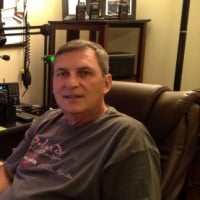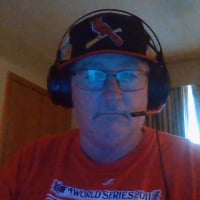SmartSDR v4.1.3 | SmartSDR v4.1.3 Release Notes
SmartSDR v3.10.15 | SmartSDR v3.10.15 Release Notes
The latest 4O3A Genius Product Software and Firmware
Need technical support from FlexRadio? It's as simple as Creating a HelpDesk ticket.
DSTAR HF VOICE ISSUES
I am the NCS of the International DSTAR HF Testing Net that meets 5 times a week. I’ve been doing this for over 4 years. I have a ICOM 9100, two ICOM 7100’s and a FLEX 6500 with the DV3000 USB drive.
I have 5-7 FLEX 6000 series radios on the nets out of 15-25 total
I don’t know who did the hardware or software engineering for DSTAR on the FLEX. Nor the testing. But with about 2 weeks of real use, below are some of the quirks, issues that should be looked into.
Compared to either ICOM DSTAR radio, the audio sounds low in strength/modulation. When someone tries to drive it higher, the audio starts “clipping”. A VERY obvious difference between ICOM and FLEX.
Compared to either ICOM DSTAR radio, the audio sounds has more BASS, even with the tone controls set to flat.
The set receive bandwidth of 9khz seems way to wide.
The set bandwidth of 9khz cannot be narrowed easily.
When you set a band for DSTAR. The software does not remember this, like other modes and it always reverts to SSB. When you turn off the radio, then back on, pick a band, it is on SSB, not a nice and quiet DSTAR mode.
The receive decode success of the FLEX on DSTAR seems less than either ICOM DSTAR radio. WE all hoped for a much better decode rate with the FLEX/DV3000.
Many of us with FLEX and 9100’s would like to sell our 9100’s, The FLEX DSTAR combo is not up to par yet.
Kent
KQ4KK
International DSTAR HF Testing Net – SUMMER Schedule
Use your ICOM 9100/7100, or STAR Boarded non ICOM DSTAR HF, or the FLEX 6000 SERIES SDR radios with a 3000 DSTAR USB adapter.
We routinely have two way communications coast to coast and North to South, South to Canada, Europe and Australia. We have had two way contacts to Japan. And have been heard in South Africa.
We are on each band only for 2-5 min. or so as to spend less time, if the band is dead we move on earlier. You can go back to a good freq after the net.
MONITOR REF030C to coordinate. WE may need to move early or if the freq is busy. We do not want to step on any AM or SSB activity.
We also use a web page to keep track of who and where we are at - http://hf.dstar-relay.net/
You also can check-in to this web site anytime 24/7 to find a DSTAR HF Ham to talk to.
We will have a PRENET for 30 min. before the start of the scheduled time. This PRENET is for ‘FREE FORM” contacts. One should check the web site http://hf.dstar-relay.net/ sign in and find a working freq to work on. When the net starts at the scheduled time, please join the net and follow the freqs.
We have a post-net (Hot Wash) at the end, on REF030C and report on our 1 way and 2 way contacts. This is done by the QUICK KEY method.
DSTAR HF VOICE SCHEDULE (SUMMER)
Sat PM 7:00 E (2300Z)
Sunday AM 10:00 E (1400Z Sunday)(Spend more time on each open band, and start on 80m) Sunday PM 7:00 E (2300Z)
Tuesday and Thurs night at 8:30pm E (0030Z Wed and Fri)
Check USB/LSB on freq to make sure the freq is clear.
SUNDAY AM, we start with 80m and work towards 6 meters.
6 mtrs 51.180 DV for 2 mins
10 mtrs 29.480 DV for 2-5 mins
12 mtrs 24.938 DV for 2-5 mins
15 mtrs 21.380 DV for 2-5 mins
17 mtrs 18.148 DV for 2-5 mins
20 mtrs 14.325 DV for 2- 5 mins
40 mtrs 7.285(or another open freq) DV for 2- 5 mins
75 mtrs 3.880 DV for 5 mins Backup is around 3.725.
NCS will check the freq ahead of time to make sure we don’t step on anyone 3KC up and DOWN.
See how to do DSTAR HF with an ICOM at- http://www.youtube.com/watch?v=oGF-qkdoid4
"Digital voice is defined in the Commission’s rules as voice (i.e. phone), not data, per Section 97.3(c)(5) of the Rules." Check out the most recent comments by the ARRL: http://apps.fcc.gov/ecfs/document/view?id=7521063715Comments
-
Kent thanks for all you do for the DSTAR HF Net! You do a great job!
I'm concerned about the 9.6k bandwidth. It's too hard to squeeze into a busy band without upsetting our fellow hams around the freq. I may be wrong but isn't a DSTAR signal supposed to be 6.5k wide? I've only had a few DSTAR qso's with my 6300. I've also had a few complaints. see below.
I'm thinking some of us with Flex 6300's need to wait until Flex comes out with a fix for the dirty signal issue. This may be part of the problem. Here's a screen shot of my current DSTAR TX signal:
Cal/N3CAL0 -
I have entered this report into our bug tracker for further investigation. Please report any additional information related to this specific issue in this community topic.
2 -
Yes, the bandwidth of DSTAR is about 6.2khz, about the same as AM. WE have been careful where we run the DSTAR HF VOICE net, trying to not step on any other signals. FLEX waterfall is now a great help in this effort. Nice shot of your TX signal. MY issue is on the RX filter. The signal received is really about 6.5khz. Don't need a 9khz RX filter. When you receive a 2.7khz SSB signal, you neck down the FLEX to 2.7khz filter. That works great. Should be able to do the same for DSTAR HF signal easy as SSB.
0 -
Because I'm using a Transverter (Elecraft XV-144) with my Flex-6300 I'm unable to see my TX signal in the Panadapter or Waterfall while working the 2m band so I'm not sure if the dirty signal issue also applies to the Transverter port? I did however take snapshots of my TX signals using both the Flex and an Icom ID-51 DSTAR HT using a third party SDR Dongle. You can see the difference in bandwith between the two:
Flex-6300 DSTAR on 2m
Icom 51AD HT DSTAR on 2m
Cal/N3CAL0 -
"When you set a band for DSTAR. The software does not remember this, like other modes and it always reverts to SSB. When you turn off the radio, then back on, pick a band, it is on SSB, not a nice and quiet DSTAR mode."
I have profiles set for DSTAR with DSTAR as the mode, but when opened it opens in FDV mode.
0 -
Installed SSDR V1.5.1. on my 6300 tonight and tried DSTAR HF again. I have the same TX Signal as I posted above using SSDR v1.5 before. All settings are exactly the same:
RX = Ant 2- Pixel RF1b Broadband Loop / TX= Ant 1- 43' Vertical
RX = Ant 1 - 43' Vertical / TX= Ant 1 43' Vertical
Note: Anytime Ant 2 is selected as the RX antenna you get the bright wide display in the waterfall, even with no antenna connected to Ant 2 port.
Can someone comment on above signals and confirm I still have an issue? Next step is to get someone to look at the signal over the air using a SDR.
Cal/N3CAL0 -
For a comparison here is V1.5.1 on SSB:
RX Ant= 2
RX Ant=1
Cal/N3CAL
0 -
Tim,
I have a similar problem on my 6500. RX works on DStar. From a 6700 and an IC9100.
My transmit wave form seems very wide compared to the others. There is no audio received on the other two radios.
I am using the balanced mic input. I have had the problem with 1.5 and 1.5.1 and after uninstalling and reinstalling the DStar waveform. I have used 160m on Ant 2 and 80m on Ant 1. FreeDV works well.
Is there a way to test the Thumb DV? Thought I assume any defect would effect both TX and RX.
What else should I try?
Andrew de vk5cv0 -
I have the same issue on my 6300 on 1.5.1. Very wide signal exactly as shown in Cal's screeenshot above. The receive decode seems very poor. I have signals that peak between -75 and -80 db on the panadapter and do not decode. A similar SSB signal would **** me out of the room. This option for D-Star does not seem to have been well tested prior to release?
FreeDV works quite well, although the FreeDV software fed with Flex DAX audio decodes better than the Flex alone.
I receive reports of good audio using either D-Star or FDV.
Larry/KC1DAD
0 -
I heard you load and clear on the DSTAR HF VOICE Prenet tonight. You had a strong signal, tho the standard low FLEX DSTAR audio.
They are working on all this on an open trouble ticket.
You need to put your call sign in the SMARTSDR DSTAR Waveform file when you open it up.
Kent
KQ4KK
NCS DSTAR HF VOICE NET
0 -
My call sign is in the SmartSDR client, per the instructions. While I am new to Flex DStar, I have used DStar for a few years.
While this is a nice addition to the Flex, it clearly was not tested very well prior to release. I'd rather wait for a thoroughly tested option.
In the meantime, I'll use FreeDV on the Flex, which works much better and used less bandwidth.
0 -
I'm sure i understand why you change freq every 5 minutes,
0 -
It seems FLEX has discontinued the sale of the DV3000 USB stick and removed the DSTAR DV waveform software from the download directory.
Instead of fixing the issues, did they bury/delete it all?
0 -
Wow! it's been 3 years now and no progress! Flex has done nothing but add it to the long list of unresolved issues! Sadly, It now appears this was all a marking gimmick to sell more radios! Shame on them!
1
Leave a Comment
Categories
- All Categories
- 379 Community Topics
- 2.1K New Ideas
- 631 The Flea Market
- 8.2K Software
- 121 SmartSDR+
- 6.4K SmartSDR for Windows
- 183 SmartSDR for Maestro and M models
- 430 SmartSDR for Mac
- 271 SmartSDR for iOS
- 259 SmartSDR CAT
- 193 DAX
- 382 SmartSDR API
- 9.3K Radios and Accessories
- 39 Aurora
- 262 FLEX-8000 Signature Series
- 7.2K FLEX-6000 Signature Series
- 947 Maestro
- 56 FlexControl
- 866 FLEX Series (Legacy) Radios
- 924 Genius Products
- 463 Power Genius XL Amplifier
- 336 Tuner Genius XL
- 125 Antenna Genius
- 297 Shack Infrastructure
- 209 Networking
- 460 Remote Operation (SmartLink)
- 144 Contesting
- 787 Peripherals & Station Integration
- 139 Amateur Radio Interests
- 1K Third-Party Software



